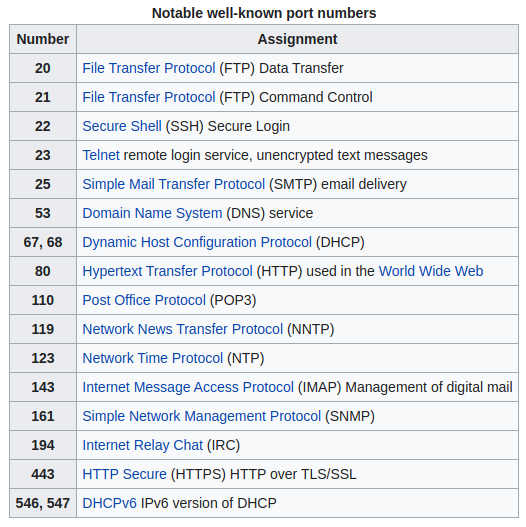You cannot select more than 25 topics
Topics must start with a letter or number, can include dashes ('-') and can be up to 35 characters long.
| marp |
paginate |
math |
theme |
title |
| true |
true |
mathjax |
buutti |
2. HTTP |
HTTP
Contents
- What is HTTP?
- HTTP Requests
- HTTP Responses
- IP address and ports
What is HTTP?
- HTTP (Hypertext Transfer Protocol) is a TCP/IP based communication protocol, which provides a standardized way for computers to communicate with each other
- The communication happens between a client (browser, application…) and a server
- The client sends a request, and the server returns a response
- HTTP is connectionless:
- The client and server are only aware of each other during the request-response phase
- After that, each new request is sent through a new connection
But what is TCP/IP?
- It is known as the Internet protocol suite
- Framework used for organizing communication protocols over the Internet
- TCP = Transmission Control Protocol
- Controlled stream of bytes between applications communicating via an IP network
- IP = Internet Protocol
- Delivering packets from host to destination with IP addresses
HTTP structure
- The HTTP protocol acts as a communication bus between the web client (e.g. web browser) and the web server
- There can be multiple clients connected to the server simultaneously
- The clients are not connected to each other but only to the server
HTTP requests
- HTTP defines a set of request methods
- The most common requests are
GET, POST, PUT and DELETE
- These are needed to create a basic CRUD app (Create, Read, Update, Delete)
- More requests are listed in the mdn web docs
| HTTP Method |
Usage |
Example Use |
GET |
Retrieve content |
Browser fetching a webpage |
POST |
Add new data |
Submitting a form to create a new account |
PUT |
Update existing data |
Updating user profile information |
DELETE |
Remove existing data |
Deleting a user account |
Note: URI vs URL
- The website address is more formally known as the URL (uniform resource locator)
https://maps.google.comhttps://maps.google.com/maps?q=Oulu (includes a query)
- It is a subset of an URI (uniform resource identifier)
- This identifies a resource on a webpage
HTTP request format
- Request line:
<request method> <request URI>
- Example:
GET https://example.com/products
- Headers (optional)
- Example:
Date: Mon, 07 Sep 2020 08:39:33 GMT
- Example:
Content-Type: application/json
- Body (optional)
- Example in the JSON format:
{
"date": "2020-09-08T11:39:34.2837813+03:00",
"temperatureC": 11,
"temperatureF": 51,
"summary": "Cool"
}
HTTP request examples
| Method |
URI |
Headers |
Body |
GET |
http://server.com/ |
|
|
GET |
http://server.com/10 |
|
|
POST |
http://server.com/users |
Content-Type: application/json |
{"name": "Dan"} |
PUT |
http://server.com/users/2 |
Content-Type: application/json |
{"name": "Danny"} |
DELETE |
http://server.com/users/2 |
|
|
HTTP response format
- HTTP responses have the following format:
- Status line:
<HTTP version> <status code> <reason phrase>
- Headers (optional)
Date: Mon, 07 Sep 2020 08:39:33 GMTContent-Type: application/json
- Body (optional)
{
"date": "2020-09-08T11:39:34.2837813+03:00",
"temperatureC": 11,
"temperatureF": 51,
"summary": "Cool"
}
HTTP status codes
- The status line of HTTP a response sent by an API should accurately describe the status of what happened on the server after each request:
- Did the operation succeed? (
2xx status codes)
- Was there an error with the request? (
4xx status codes)
- E.g., the request line was malformed, or the server doesn't support it
- Did a server-side exception occur? (
5xx status codes)
- This is never the client's fault!
Status codes for a CRUD app
- Your APIs should use the following status codes for responses to CRUD operations
- See Restfulapi.net and Wikipedia HTTP status code listings
2xx SUCCESS |
4xx CLIENT ERROR |
5xx SERVER ERROR |
200 - OK |
400 - Bad Request |
500 - Internal Server Error |
201 - Created |
401 - Unauthorized |
|
204 - No Content |
403 - Forbidden |
|
|
404 - Not Found |
|
|
409 - Conflict |
|
IP and ports
IP addresses
- Every node, or host on a computer network needs an IP (Internet Protocol) address
- These can be public or private
- Serves two functions: identifies and provides the location of the host
- The old 32-bit IPv4 addresses are of the form
192.0.2.1
- The 128-bit IPv6 addresses are of the form
2001:0db8:0000:0000:0000:8a2e:0370:7334 (can be shortened to 2001:db8::8a2e:370:7334)
Port numbers
- The IP address is often followed by a port number separated by a colon:
192.0.2.1:8080
- The port number (16-bit unsigned integer) defines the port through which communication to your application happens
- Ports allow multiple applications to be located on the same host
- The client connects to this port in some server (defined by an IP address), so the client and the server are able to communicate
- Computers have several different ports at their disposal
Reserved ports
- Some of them are reserved and your application might not be able to assign those ports to itself
- Ports from 0 to 1023 are system ports
- There are restrictions in manually assigning applications to use them
- Generally, ports from 1024 to 65535 are available for the user to assign for applications

